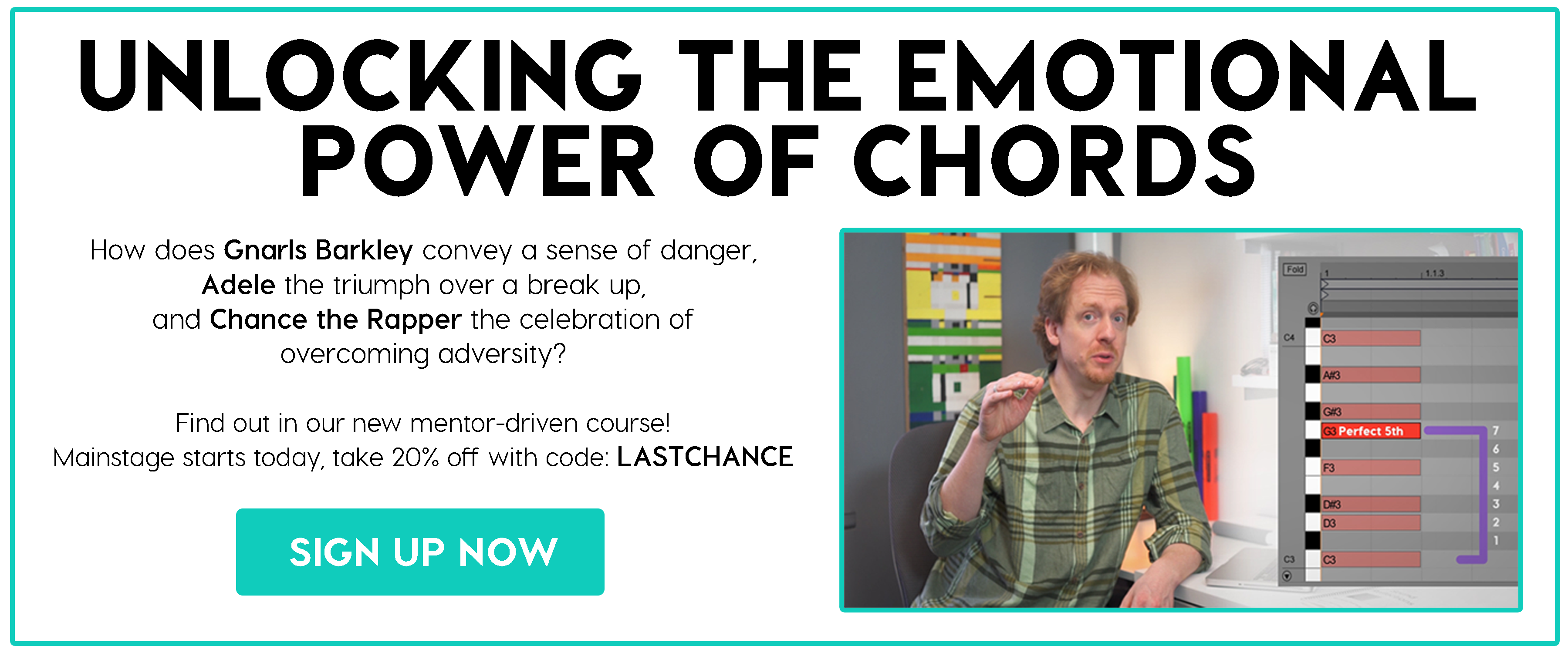Finding The Saddest Chord Progression In The World
In this in-depth theory driven piece, Ethan Hein explores the world of structural tragedy in music, dissecting some of music's saddest chord progressions, what makes them that way, and how to manipulate a listener's emotions.
_________________________
Guest post by Ethan Hein of Soundfly's Flypaper
This is an updated version of an article that previously appeared on Ethan Hein’s blog.
In 1895, the short-lived Russian composer Vasily Kalinnikov wrote this particularly lovely piece of music:
This is the second movement of Kalinnikov’s Symphony No. 1 in G minor. At 6:16, there’s a particularly beautiful and tragic chord progression. It’s in the key of E♭, but I transposed it into C for ease of understanding:
I mentally refer to this progression as “the Willie Nelson turnaround,” because I first heard it in his classic recording of “I’d Have to Be Crazy,” written not by Willie, but by Steven Fromholz. I had the pleasure of performing this tune many times back in my country-music days, and it makes a surprisingly great lullaby for my kids.
+ Read more on Flypaper: “What Happens When You Mess with the Keys of Iconic Movie Theme Songs?”
The version of the progression in “I’d Have to Be Crazy” uses a different harmonic rhythm and starts on the I chord instead of vi, but the emotional effect is the same. Nelson’s tune is in E, but again, I transposed into C for easier comparison.
The descending chromatic feeling you get from D7 to F minor to C is related to this timeless blues riff:
The E♭dim7 chord has three notes in common with D7 (F#, A, and C). The Dm7♭5 chord similarly has three notes in common with Fm (F, A♭, and C).
Still, the emotional impact of the blues cliche is very different. The blues is tragic, but it isn’t exactly sad the way that Kalinnikov and Willie Nelson are. I think of the blues as being more about overcoming or enduring sadness than just expressing it.
The Kalinnikov/Nelson progression is also related to the “Beatles cadence,” technically a combination major/minor plagal cadence. You can hear it around 1:00 in the bridge of “If I Fell.”
This tune is in D, but I’m once again putting it into C for discussion purposes. In the line, “But I couldn’t stand the pain,” the word “pain” lands on F, the major IV chord. In the next line, “And I would be sad,” the word “I” lands on F minor, the minor iv chord.
The Beatles cadence is effective, but it’s tamer and less chromatic than the Kalinnikov/Nelson chords. Why is the Kalinnikov/Nelson turnaround so sad? And why is it so much hipper than the Beatles cadence?
I think it’s because of the way it defies your expectations.
Here’s how D7 is supposed to work in the key of C: it temporarily puts you in the key of G. The most conventional (boring) chord to follow D7 is G7, followed by C. Let’s think of this in terms of scales. Here’s the C-major scale:

The scale implied by D7 is D Mixolydian, which contains the same pitches as C Lydian, the brightest of all the diatonic modes.

Landing on the G7 chord puts us back in C major. There’s a bit of tension from the F rising up to F# and then falling back to F, but basically, all is sweetness and light.
This is not what happens in the Kalinnikov/Nelson progression. Instead of trotting obediently around the circle of fifths like you expect, the D7 unexpectedly resolves to F minor instead. This surprising chord implies F Dorian, alternatively known as C natural minor. So you go from this bright C Lydian sound:

To this much darker C natural minor sound:

+ Read more on Flypaper: “How to Create Dreamier Guitar Chords”
Instead of moving from the brightest scale to the second brightest, you’ve just moved to a decidedly dark place. Even the voice leading is depressing: the F# and A in the D7 chord slump dejectedly down to F and A♭ in the F-minor chord. And the Beatles cadence is weaker because it doesn’t lift up to F# before the descent into minor land.
Sadness is always that much sadder if you were expecting happiness.
—
Learn more about the intricate ways you can straddle the divide between happiness and sadness in your music and catch one of the last places in our new Mainstage course launching this week, Unlocking the Emotional Power of Chords, and get 20% off with code: LASTCHANCE. Here’s a preview!
